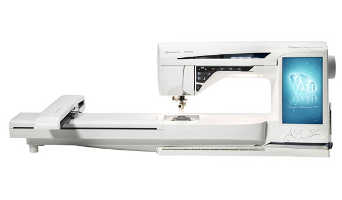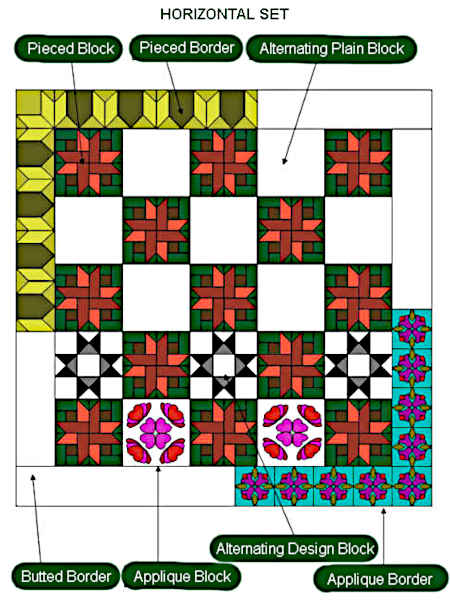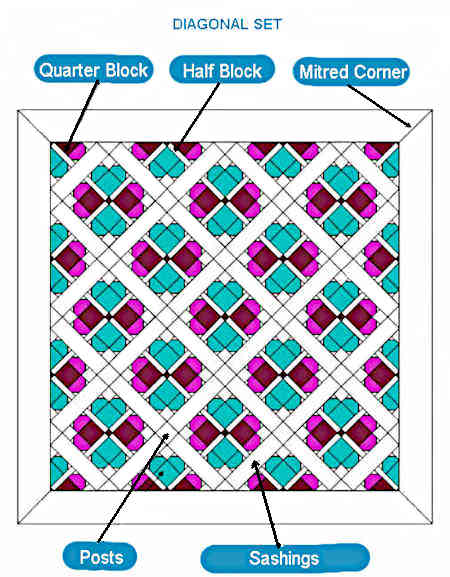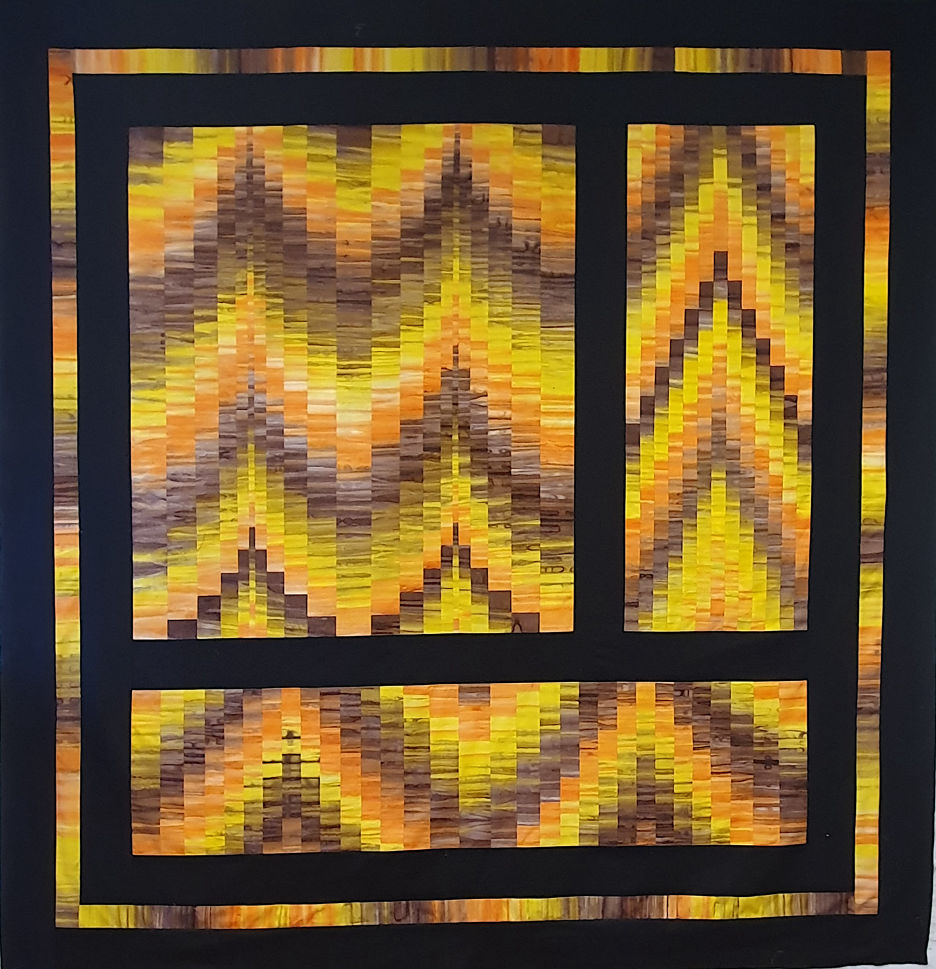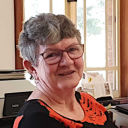Fabric Cutting
Place a piece of fine sandpaper under the fabric which will grip the fabric so it doesn’t move as you trace around the template.
Place the template face down on the wrong side of the fabric and mark along the sides using a sharp lead pencil held at an angle. The angle keeps the point sharp so it moves over the fabric smoothly and gives a finer, accurate line.
For sharp points, do not trace around corners but extend the side lines past the corners, forming accurate cross lines.
When cutting, cut right on the line, not to either side.
The most important step for accurate rotary cutting is to ensure that the fabric is accurately squared up.
To do this, bring the selvedges of the fabric together creating a fold through the centre of the fabric. If the fabric does not lie flat, move the selvedges in the opposite direction until there are no puckers or folds in the fabric.
When you are satisfied that the fabric is completely flat, lay the fabric on your cutting mat with the fold in the fabric parallel to a grid line on the longest side of your cutting mat.
Place your longest ruler at right angles to the fold in the fabric and close to the edge of the fabric to be straightened. If placed correctly, the ruler should also be parallel to a grid line on the shortest side of your cutting mat.
(These directions are for the largest size cutting mat, if you have a smaller mat the fold will need to be placed parallel to a grid line on the shortest side of your cutting mat).
Cut through the entire length of the fabric exactly along the ruler. Always cut away from yourself.
All shapes can now be cut easily using your rotary cutting equipment.
To cut squares, rectangles and strips , add 1.5 cm or ½inch to the finished size.Eg, Squares with a finished size of 5 cm or 2 inches should be cut 6.5 cm or 2 ½ inches.
To cut half-square triangles, add 2.5 cm or 7/8 inches to the length of the finished short side of the triangle required.
Eg: Half-square triangles with a short side length of 5 cm or 2 inches should be cut into squares of 7.5 cm or 2 7/8 inches. Re-cut square diagonally (once) to yield 2 half-square triangles.
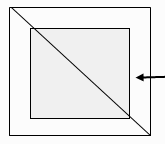
Size of shorter side of finished triangle
plus 2.5cm or 7/8 inch
To cut quarter-square triangles, add 3.5 cm or 1 ¼ inches to the length of the finished long side of the triangle required.
Eg: Quarter-square triangles with a long side length of 10 cm or 4 inches should be cut into squares of 13.5 cm or 5 ¼ inches. Re-cut square diagonally (twice) to yield 4 quarter-square triangles.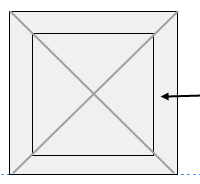
Size of longest side of finished triangle
plus 3.5 cm or 1 ¼ inches
Fabric Grain Lines are an important consideration when cutting fabric.
The three types of grain lines are:-
1. True grain which runs parallel to the selvedge and has little or no give.
2. Crosswise grain which is perpendicular to the selvedge and has a small amount of give.
3. Bias grain is any direction other than true or cross grain. True bias runs at a 45 degree angle to the true or cross grain.
Deciding which grain to use may be simplified by considering the following:-
Place all outside edges of the block on the straight grain (true or cross), and
Whenever possible, sew a bias edge to a straight grain to stabilise the bias edge.
However, in some cases, design may determine the grain line, in which case bias edges may be tamed using spray starch or careful staystitching 1/8” or 3mm from the raw edge.
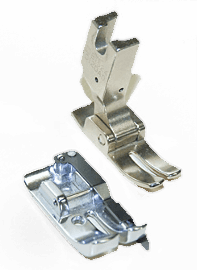 Piecing requires being able to sew a precise seam allowance, using presser feet as a guide and/or by adjusting the position of the foot.
Piecing requires being able to sew a precise seam allowance, using presser feet as a guide and/or by adjusting the position of the foot.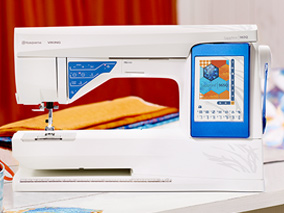 As an independent, professional quilter with extensive experience demonstrating, selling and teaching on the main brands and models sold locally, I recommend the
As an independent, professional quilter with extensive experience demonstrating, selling and teaching on the main brands and models sold locally, I recommend the
